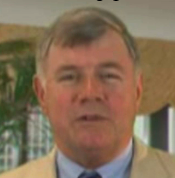A Conductivity Model for Archie RocksNew
OR
SPWLA members, view the course for free!
For more lectures like this, join SPWLA today
Your Instructor

David Kennedy, in the time-honored tradition of “oil patch trash”, is a true vagabond. Having attended three universities, and receiving three degrees, David has worked in the “oil patch” since 1973 for two service companies, five oil and gas operators, one geophysical data acquisition company, not to mention brief stints at both Northrop and Lockheed, and odd jobs around the house. He did stay with Mobil and Exxon for 20 years to prove to his mother that he could hold a job, but clearly that is arguable. Beginning with training at the Schlumberger learning center in 1973, David was always confused by explanations of how rocks conduct electricity, and how induction logs responded to conducting rocks. Although he is still a bit confused, things are now much clearer, and he thinks he has contributed in a small way to the understanding of conductivity anisotropy in reservoir rocks, and how induction instruments respond to it. David has six U.S. patents covering the measurement of resistivity anisotropy in the laboratory and using tri-axial logging instruments. David has about 35 publications as author or co-author, mostly on induction logging instruments and petrophysics of conductive rocks, and maybe has a few papers still left in him. His most personally rewarding jobs (although he liked them all) have been as a Schlumberger field engineer 1973-1977, and his recent employment at Southwestern Energy where he lived the dream of finding oil and gas. David has served the SPWLA as Editor of Petrophysics, Vice President of Publications, Vice President of Technology, and President. Although in love with the oil and gas business, David is looking forward to slowing down a bit following the next few years. The slowing down schedule has recently accelerated a bit; first layoff in 43 years at age 69 – not bad, Mom. Any continuing contributions to the industry will be in the field of training. Watch for a new kind of formation evaluation learning from QED Petrophysics. Recently David joined the faculty at Texas A&M University in the Petroleum Engineering Department, so now, at least for a while, you can call him “Professor”.
Course Curriculum
-
Start1. Introduction of Archie's Law (8:55)
-
Start2. Theorem of Conductivity Models for Archie Rocks (6:59)
-
Start3. Predicting Pore Geometry – Porosity Correlation (5:49)
-
Start4. Irreducible Scatter in Porosity – Conductivity Data (8:46)
-
Start5. Geometrical Factor Theory (GFT) (6:54)
-
Start6. GFT –Archie Connections (11:32)
-
Preview7. Summary (4:36)
